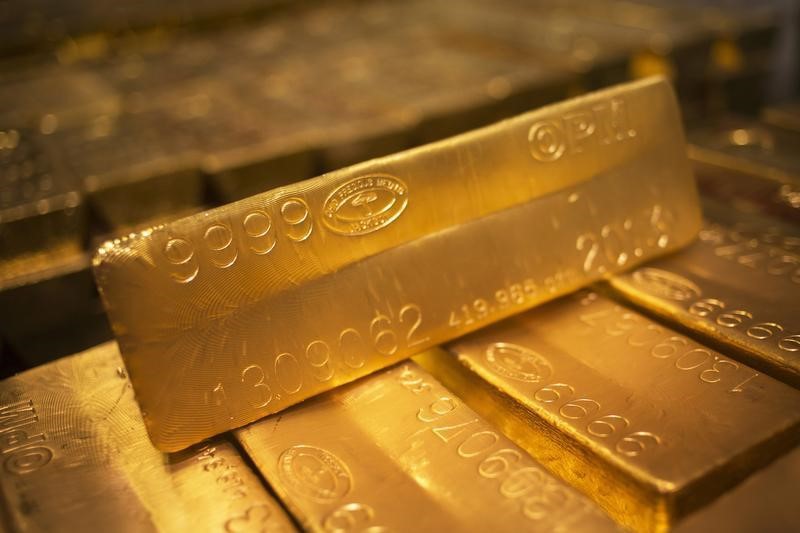Investing.com - Gold futures rose to the highest levels of the session on Thursday, as investors monitored volatile movements in global equity markets.
Gold for December delivery on the Comex division of the New York Mercantile Exchange tacked on $7.40, or 0.67%, to trade at $1,109.40 a troy ounce during U.S. morning hours.
Gold's gains came as U.S. stock futures turned lower, as appetite for riskier assets weakened amid worries over sluggish global growth.
During early morning hours in New York, the blue-chip Dow futures fell 91 points, or 0.56%, after rallying 150 points earlier. On Wednesday, the Dow lost 240 points, led by declines in shares of Apple (NASDAQ:AAPL) and energy companies, which fell along with oil prices.
On the data front, the U.S. Department of Labor said the number of individuals filing for initial jobless benefits fell by 6,000 last week to 275,000 from the previous week’s total of 281,000.
First-time jobless claims have held below the 300,000-level for 27 consecutive weeks, which is usually associated with a firming labor market.
A day earlier, gold tumbled to $1,100.10, a level not seen since August 11, after data showed that the number of job openings in the U.S. rose to the highest level on record in July.
The report boosted optimism over the health of the labor market and supported the case for a rate hike when the Federal Reserve meets on September 16-17.
The timing of a Fed rate hike has been a constant source of debate in the markets in recent months.
Gold fell to a five-and-a-half year low of $1,072.30 on July 24 amid speculation the Fed will raise interest rates in September for the first time since 2006.
Expectations of higher borrowing rates going forward is considered bearish for gold, as the precious metal struggles to compete with yield-bearing assets when rates are on the rise.
Elsewhere in metals trading, copper for December delivery on the Comex division of the New York Mercantile Exchange rose 0.8 cents, or 0.34%, to trade at $2.445 a pound, not far Wednesday's seven-week high.
Copper's gains came after weak China inflation data reinforced views that Beijing will roll out fresh support measures soon for the world's second largest economy.
Government data showed that Chinese producer prices fell by a more-than-expected 5.9% in August, the 42nd straight monthly decline and the worst reading since October 2009.
Consumer prices rose 2.0% last month, above expectations for 1.8% and up from 1.6% in July. Non-food inflation remained subdued at 1.1%, unchanged from a month earlier.
The soft inflation data added to speculation policymakers in Beijing will have to introduce further stimulus measures to boost growth.
Trade data on Tuesday revealed that China's imports shrank far more than expected in August, falling for the 10th straight month. A slowdown in domestic demand indicated a recovery in the broader economy remains fragile and may need further government stimulus.
The Asian nation is the world’s largest copper consumer, accounting for almost 40% of world consumption last year.
